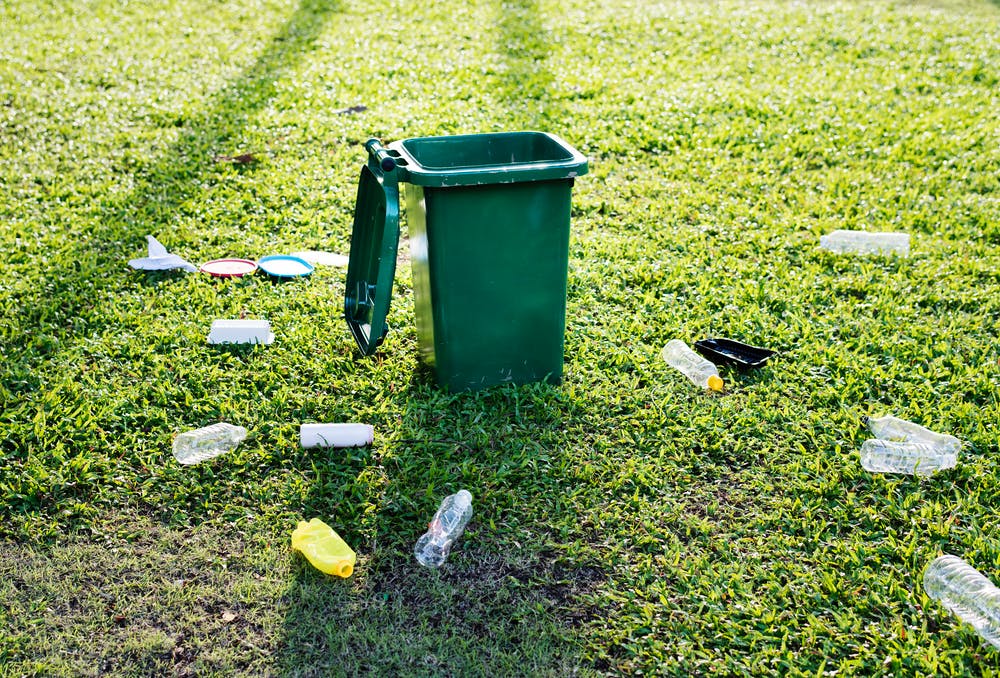In celebration of Earth Day, I thought it was fitting to talk about ways we all can reduce our carbon foot print and live a bit more environmentally conscious. When we talk about health, of course nutrition and exercise come to mind. But part of living a healthy lifestyle includes the health of our planet as well. Think about the impact if every person in the U.S. decided to start doing one more of these things than they currently are doing. Now that’s the kind of ripple effect we can be proud of!
- Use real dishes. Paper plates and other disposable dishware are not only costly to buy over and over, but they are costly to the environment as well. The chemicals in these items also aren’t doing us any favors.
- Don’t litter, and pick up other trash you come across. This one is so simple, and no one likes a litter bug.
- Recycle. Check with your town and see what options are available to you. Many areas now offer curb side pick-up that doesn’t even have to be sorted. Other areas may only accept certain materials or have designated drop off locations. Every item that is recycled is one less item piling up in a landfill.
- Reduce your waste. Say no thank you to a plastic bag at checkout if you only have one or two items. Instead of purchasing individually packaged goods, buy in bulk and divide them up yourself into reusable containers.
- Chose a reusable water bottle. Did you know it takes at least 450 years for a single plastic water bottle or soda bottle to biodegrade? Instead, chose a material like stainless steel or glass that you can refill and use for years to come.
- Use cloth napkins. Instead of ripping off a paper towel or reaching for numerous paper napkins, invest in a few cloths ones. This is also a great way to add a fun pop of color or holiday cheer to your dining table.
- Consider cloth diapers. If you’ve ever cared for a baby, you know they produce a LOT of dirty diapers. If you thought 450 years for a water bottle to decompose was bad, a single disposable diaper takes 500 years! According to experts, babies use between 2500 and 3000 diapers in their first year of life alone. That’s A LOT of waste! Not only does cloth prevent all that garbage from being produced, but it saves your pocketbook a hefty amount as well!
- Revamp your cleaning routine. Instead of reaching for popular chemical sprays and a roll of paper towel, you can get the job done with quality microfiber and water instead. We switched to Norwex products over 5 years ago and not only are they better for the environment, but they’ve helped us save time and money too!
- Grow your own food. Not only is gardening a enjoyable hobby, but it reaps lots of rewards as well. Growing your own food not only helps support your local ecosystem, but also supports a lifestyle of fresh and delicious produce at budget prices.
- Collect and utilize rainwater. Check your local ordinances, but many areas allow you to collect and use rainwater. We save lots of money by doing this and our plants thrive!
- Start a compost bin. Turning your kitchen scraps into nutrient dense fertilizer is a great way to reduce the amount of garbage you produce.
- Take reusable shopping bags and produce bags with you. These are easy to store in the trunk or back of your vehicle, and they are so much stronger and sturdier than flimsy plastic bags. This doesn’t have to be exclusive to the grocery store either! Home improvement stores, wholesale clubs, general shopping… they still get the job done! These bags are my favorite for buying produce, and I get asked about them all the time by other shoppers.
- Reuse what you can. If you do find yourself shopping somewhere without your reusable bags, make sure you either repurpose those plastic shopping bags (such as for bathroom trashcan liners) or that they get recycled appropriately. We also repurpose things like coffee cans, glass jars, and cardboard boxes for storage solutions around the house or in the garage.
- Line dry your clothing. Instead of running the dryer, hang your clothes outdoors and let the sunshine and breeze work their magic. If you live in an apartment or other dwelling without the space for a clothesline, a compact drying rack is a great solution.
- Exercise your way there. Instead of driving, leave a little earlier and either walk or bike to your destination. It’s a great way to get where you are going while burning calories instead of fossil fuels.
- Organize a carpool. While some situations may require driving, try to carpool as much as possible to save on fuel usage and costs.
- Open the windows. Instead of kicking on the AC, open the windows for some fresh air. Use a ceiling fan to circulate airflow and cool things down.
- Layer up. Rather than kicking the heat up a few notches, choose warmer layers like wool socks or an extra quilt on the bed.
- Invest in EnergyStar. When it’s time to upgrade a household appliance, chose an EnergyStar model and be sure your old appliance is disposed of properly. Check with your electric company to see if they offer rebates for recycling the former model. We received a $50 Visa giftcard from our electric company just for letting them haul away our old refrigerator. They came and picked it up for free, and made sure it was recycled for us.
- Do what you can, as much as you can. It’s okay if you can’t always live a zero waste, 100% green lifestyle. Start by making a few small changes here and there, and build on your efforts as you go. Each small step we take can really add up!
What ideas do you have for going green? I’m sure I missed a few, so leave your thoughts, comments, or recommendations below!





лечение пивного алкоголизма без ведома больного – лечение алкоголизма цена, лечение алкоголизма в стационаре